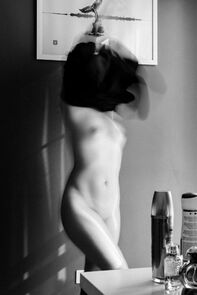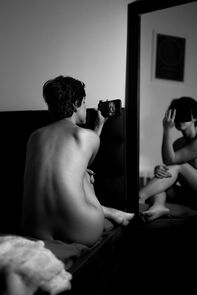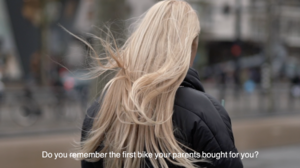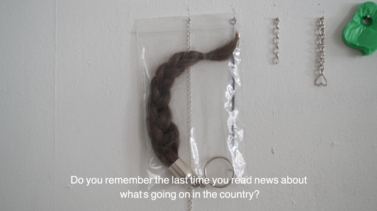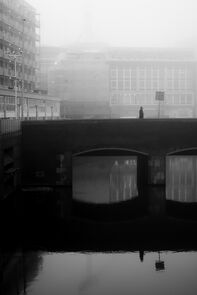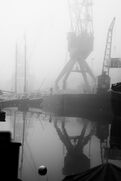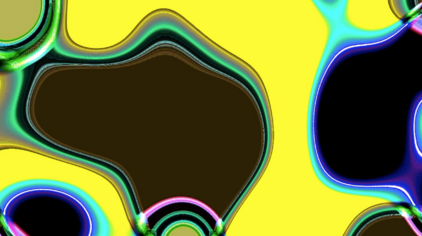Textonpractice
To find my identity. This is the answer to all of the projects I have been working on since I was 13 years old to this day now living in Rotterdam pursuing my master’s. I was searching for my identity from the moment I discovered I was a woman and strange things were happening to me and I had to hide it all from my parents. I did not even know my pictures were called nude or self-portraits or they were a project, till I started to apply for my master’s. Then, I realized I have to give meaning to this long-term project that actually was, is a very big part of who I am. The description I wrote came out to be this :
This project signifies the life of a young Iranian woman, in height of her sexuality, that lives in an Islamic country. My focus is to show how I desire to empower my gender and identity, but society forces me to cover it in black. In Iran, sexuality and sensuality are forcefully merged. Women have no right to endure and empower themselves in Iran. In this project, I used my own body, the only safe and secret option, as a medium to discover the idea. My goal was to continue protesting this suppression; Iran has no place for women to follow a taboo such as beauty, sensuality, or nudity.
I thought I am coming to the Netherlands to continue this project but life had other plans for me. In September 2022, 1 month after my migration, Iran’s woman.life.freedom revolution started. I stopped the project As I struggled with my sexual life as a woman. The world was spinning around in my head when the opportunity of making a short film for the EYE film museum in Amsterdam as a part of our program presented itself.
I wanted to have the approach towards non-Iranians to take action about Iran’s revolution. Something that felt like a part of my identity. I had 4 minutes to play with and I ended up at 03:58 minutes. I chose to work with the idea of a normal life, Very strange topic to me because I never knew what you could assume as “normal”. So I had to show Everything that would remind a Rotterdamer of their life and is familiar to them. For instance, people walking down the street or talking to each other, or going somewhere with their child. It reminds the audience that they have this freedom of a normal life because other people fought for these rights in the past. I chose to use my camera, a sony alpha 7riii, and implement the use/faking of long lenses to heighten the sense of distance from the audience’s point of view, to capture the moving images. It took a long experiment for me to get over my fears of having a camera in the streets in this project because I was so traumatized from not being able to have a camera in the streets of Iran. It was always dangerous for being caught by the authorities or be stolen. I wanted the pictures to be beautiful and poetic, not just documentaries. Creating such things was a perfect learning point in my artistic path which I was not used to. The final result came out satisfying to me.
The missing part was the connection between the pictures and what I wanted to convey. What is normal life and Freedom to have it? On the first day of the "Is it possible to talk about power and violence without showing their depictions?" seminar, We saw a short film that gave me the connection I was looking for. The narrative and how I could work with it in an abstract way.
I chose a sentimental feeling Iranian song for the background when the audience will hear a series of questions, that they can/can not relate to, starting with do you remember? I wanted to give a dreamy, makes you feel it’s not real, feeling to the atmosphere of the film with that decision. The questions are not supposed to give a direction to the audience and were chosen out of very dramatic stories that happened in Iran. After 4 minutes of not knowing, the film leaves the audience with a few sentences honoring the people who have died fighting for freedom in Iran.
I clicked EXPORT and there was a moment of relief. I felt empty again. Who am I?
Speaking of identity, inspired by the text (vistas of modernity decolonial aesthesis and the end of the contemporary) i read in the same seminar, I draw a connection between colonialism and totalitarianism and how they try to impose ideology over people, taking away their identity, and reduce humans to 'the same'. This frustrated, and angered me but also inspired me to pick up my camera again in the intense fog in the city and hit the streets to make ambiguity series.
The fog has a sort of magical and almost intimidating effect, it can be read as violence, and it also tends to make the people it surrounds be engulfed in it, also reflecting this notion of 'The same'.
The photos I took are in black and white. I implemented the use/faking of long lenses once again to heighten the sense of distance and disconnect. This allowed for a sort of compression of space, something adding to the overwhelming feeling of the fog, and the city and its size- something that was repeated on show through the use of vertical/portrait format, often highlighting large buildings, light poles, structures, etc. I would often find a frame I enjoyed in terms of environment and would wait (sometimes long!) for a human to enter the frame and interact or add the final 'Element'.
I felt “free” during this project. A word that I like to use as part of my identity and also inspired by NY photographer Hasselblad's ambassador [Ali Rajabi] who works with shadows a lot in a photo series called In the dark of day, I would like to explore how I can also evoke other emotions and atmospheric feelings, in different climates and colors, not necessarily just with fog.
I ended the year with these two projects, went on the winter break, and searched for my identity even more. When I came back, I was ready to go back to my past one more time and start the series I wanted to make for almost a year. The youtube video series, a new life abroad. I wanted to tell my story because The culture of open-minded people in Iran, which I realized was intentionally designed for them to be toxic, compelled me to believe that I was the issue and I had to constantly wear a mask of fakeness to fit into the environment. By showing my journey, transformation, and life change, I wanted to tell the young generation that there is nothing wrong with them. I will never be the person Iranian society wanted me to be, and that is not bad. Another part of my identity that I found in immigration.
The series is in Farsi now but I am considering translating it for my non-Iranian friends who happen to like the series. In terms of technical choices, I use archive footage that I filmed with an iPhone that I have from where I was living in Iran and the whole story is around that time I was living there. It is 8 to 10 episodes and it is released every week on youtube. The reason behind choosing youtube as a platform was to invite Iranian people to use youtube more and connect with the outside world of what the government has made for them. I stopped making the youtube series when I got busy with the IFFR and the question of “how to make art?” started to grow inside of my head.
I realized all of the works I did till now have an underlying layer of political matter as a starting point. Not that being a political artist is bad, I just want to experiment out of my history and background as an artist. One of my tutors, David, suggested this artist [shiraze houshyari] to me who is an abstract artist. She talks about making something out of what you do not know. Making without knowing what are you making. I decided to stop searching for a purpose and try to find value in not knowing.
This obsession shifted to another level with the workshop “a history of hand made films” by Nan Wag. I discovered The world of well-composed abstract art came from very minimal and simple materials. I was amazed by the idea of making art with materials that not everybody thinks of. I still am a lot obsessed with this process and I asked myself this question how can I make art out of the simplest materials? When I explored Touch Designer software, I made something very beautiful out of nothing with it and decided that I wanted to make the same thing as “An optical poem” by [Oskar Fischinger] which inspired me, with Iranian music. I finally feel free enough to put a value on my surroundings and not just specific subjects that I find valuable. this encourages me to make more art than to think about making art.
Now that spring break is over I am confident to say that not knowing gave me the freedom I was searching for in my identity. So I picked up ambiguity and my sound project and I am working on them alongside not knowing.
References :
Thematic seminar
Cihad Caner, "Is it possible to talk about power and violence without showing their depictions?" thematic seminar, 2022
Nan Wag, “The history of hand-made films”, 2023
Books
Rolando Vazquez, Jap Sam books, Vistas of Modernity, Decolonial Aesthesis and the end of the contemporary, 2020
Songs
Kourosh Yaghmaei, Fall, 2011
Artists works
Ali Rajabi, In the dark of day, 2019
Oskar Fischinger, An optical poem, 1938

